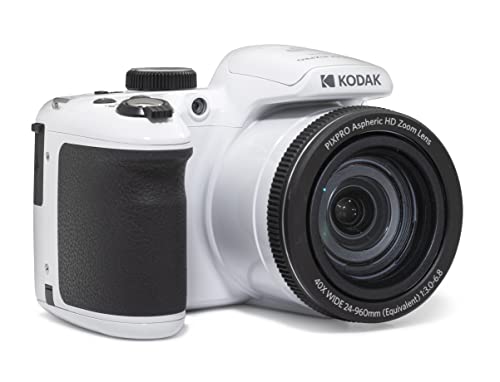
Exploring the vast reaches of space has always been a fascinating endeavor for humanity. One of the key components of space exploration is the use of cameras to capture images and data from distant planets, moons, and other celestial bodies. But were the early cameras on space probes digital?
Early space probe missions, such as the Voyager and Viking missions launched by NASA in the 1970s, primarily used analog cameras to capture images of planets like Jupiter, Saturn, and Mars. These cameras relied on photographic film to record images, which were later transmitted back to Earth for analysis.
It was not until the 1990s that digital cameras began to be used on space probes. The Galileo probe, launched by NASA in 1989 to study Jupiter and its moons, was one of the first missions to use a digital camera to capture images. This marked a significant advancement in the field of space photography.
Evolution of Camera Technology
The evolution of camera technology has been a fascinating journey, from the early days of film cameras to the digital cameras we use today. Cameras have come a long way in terms of size, resolution, and functionality.
Early Film Cameras
Early cameras used film to capture images, which had to be developed and printed before they could be viewed. These cameras were bulky and required manual focus and exposure settings.
Digital Cameras
With the advent of digital cameras, images could be captured and viewed instantly on a screen. Digital cameras revolutionized photography by allowing for easier sharing and editing of images. Early digital cameras may not have been as advanced as modern ones, but they paved the way for the technology we have today.
Early Space Probe Missions
Early space probe missions played a crucial role in expanding our understanding of the solar system and beyond. These missions were launched by various space agencies around the world with the goal of exploring different planets, moons, and celestial bodies.
Key Missions:
- Luna Program: Launched by the Soviet Union, the Luna program aimed to explore the Moon. The Luna missions provided valuable information about the Moon’s surface and composition.
- Mariner Program: NASA’s Mariner program focused on exploring Venus, Mars, and Mercury. The Mariner missions provided important data about these planets and helped pave the way for future exploration.
Early space probe cameras were not digital but used analog technology to capture images of the planets and moons they encountered. These images were transmitted back to Earth for analysis and study by scientists and researchers.
Types of cameras used
Early space probe cameras were primarily analog cameras, which captured images on film and then transmitted the images back to Earth. These cameras were used on missions such as the Voyager and Mariner missions.
Later space probe cameras transitioned to digital cameras, which captured images as digital data and transmitted the data back to Earth. Digital cameras offer advantages such as higher resolution and the ability to process images onboard the spacecraft.
| Camera Type | Description |
|---|---|
| Analog cameras | Used film to capture images, which were then transmitted back to Earth. |
| Digital cameras | Used digital sensors to capture images as data, which were transmitted back to Earth. |
Comparison of digital and analog cameras
When comparing digital and analog cameras, there are several key differences to consider. Digital cameras capture images using electronic sensors, while analog cameras use film to record images. Digital cameras offer instant feedback and the ability to store and share images digitally, while analog cameras require developing film to view the images.
One of the main advantages of digital cameras is the ability to adjust settings and preview images before capturing them. Digital cameras also offer higher resolution and the ability to easily edit and enhance photos using software. On the other hand, analog cameras are known for their unique aesthetic and the tactile experience of using film.
In terms of cost, digital cameras are generally more expensive upfront but can be more cost-effective in the long run due to the lack of film and developing costs. Analog cameras, on the other hand, require ongoing expenses for film and developing.
| Feature | Digital Cameras | Analog Cameras |
|---|---|---|
| Image Quality | Higher resolution, ability to edit | Unique aesthetic |
| Instant Feedback | Yes | No |
| Cost | Higher upfront, lower long-term | Lower upfront, ongoing film costs |
FAQ
Were early space probe cameras digital?
Early space probe cameras were not digital. The cameras used on early space probes, such as the Voyager and Mariner missions, were analog cameras that captured images on photographic film. These film images were then transmitted back to Earth for analysis.
How did early space probe cameras transmit images back to Earth?
Early space probe cameras transmitted images back to Earth using radio signals. The images captured on photographic film were converted into electronic signals, which were then sent to Earth via radio waves. The images were received by radio telescopes on Earth and processed for analysis.
What were the limitations of early space probe cameras?
Early space probe cameras had several limitations, including low resolution, limited color capabilities, and slow transmission speeds. The photographic film used in these cameras could only capture a limited range of colors and details, resulting in lower-quality images compared to digital cameras. Additionally, the slow transmission speeds meant that it could take hours or even days for images to be received on Earth.
How have space probe cameras evolved since the early missions?
Space probe cameras have evolved significantly since the early missions. Modern space probe cameras are digital and use advanced sensors to capture high-resolution images with greater color accuracy. These cameras can transmit images back to Earth in near real-time, allowing for faster data analysis and decision-making. Overall, the evolution of space probe cameras has greatly improved our ability to explore and study the cosmos.






